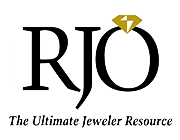At the recent Canadian Jewellers show in Edmonton, I had a nice talk with a young, Canadian jewellery store owner. I had given a seminar on the “Top 10 list of mistakes jewelers make in the display of jewellery” and at the end of my remarks, offered a free 30 minute consultation to any attendee wanting to discuss their displays.
She arrived with photos of her store in hand and asked my opinion. The first few images depicted a store that looked clean and orderly. Each case held a different vendor-provided display full of neatly arranged items. Then I saw cases full of his “Store brand” merchandise all crammed onto white leatherette displays arranged haphazardly in the case. He had way too much merchandise and the visual comparison between the previous cases and these was dramatic.
The look of these later, cluttered cases was terrible and gave the impression that her merchandise quality was inferior and overpriced whatever the price. I asked about the amount of merchandise that was over 18 mos old and her answer was approaching 40%. I commented that if we removed 40% of the merchandise in each case, we’d be closer to the amount the case could attractively hold. We would sell more because the merchandise would look better and the perceived value would rise making her affordable prices look like bargains.
She was having trouble with the concept of taking some merchandise out of the case in order to sell more. “How can I sell it if it is not in the case?” she asked. I replied, “you won’t, just like the hard fact that you haven’t sold it by it being IN the case for the last 18 months!”
Think of that old movie scenario in which the cruise ship sinks and the overcrowded lifeboat is slowly going under as well. The leaders decide that a few people have to go overboard to save the rest. It is always the older passengers that are the volunteers and go. Women and children are the hope of the future and therefore are to be to be saved.
A showcase drowning in excess merchandise will doom the store. It must be removed from the scene in order to allow the items that embody the store’s future to have a chance.
Then the young storeowner told me she was planning to buy more merchandise there at the show. I asked where she intended to display the new goods as she had no available space. She just shook her head like I had burst her shopping balloon.
We agreed to take the following steps to get her cases in shape. See how many might help you as well.
- Put in place a good inventory management reporting system to get good data about our stores condition. (My favorite is EDGE.)
- Remove all merchandise that has been in the case for over 18 months and put it in the vault. Then, melt the hopeless pieces, place some “possibles” in a clearance case with cash incentives to the sales team member that sells it. Put some of the better pieces on your female sales associates to wear, show and sell. (Yes, it really does work!)
- Redisplay the remaining inventory in a logical manner that matches how our customer shops. Use a good-better-best approach.
- Track the sales results of any display changes to KNOW what delivers results and do more of that. Change what does not deliver sales numbers.
- Set up planned guidelines as to the number of SKU’s you will display in each case to keep the cases looking full (but not crowded) of the right saleable selection. Do not overfill the case. If you buy new items and are over your targeted capacity limit, take something out.
- Monitor your inventory each month and take the dead items out of the case. Replace them with items you know from your reports will sell.
She left our discussion with her head full of ideas, much work to do and some hard decisions to make. The difference however between store owners that prosper and those that fail are how those issues are addressed. Nobody ever said being the Captain of the ship was easy.
P.S. If you’d like a free copy of the handout from my “Top 10 list of mistakes jewelers make in the display of Jewellery” seminar, send me an email at Larry@LarryJohnsonConsulting.com




